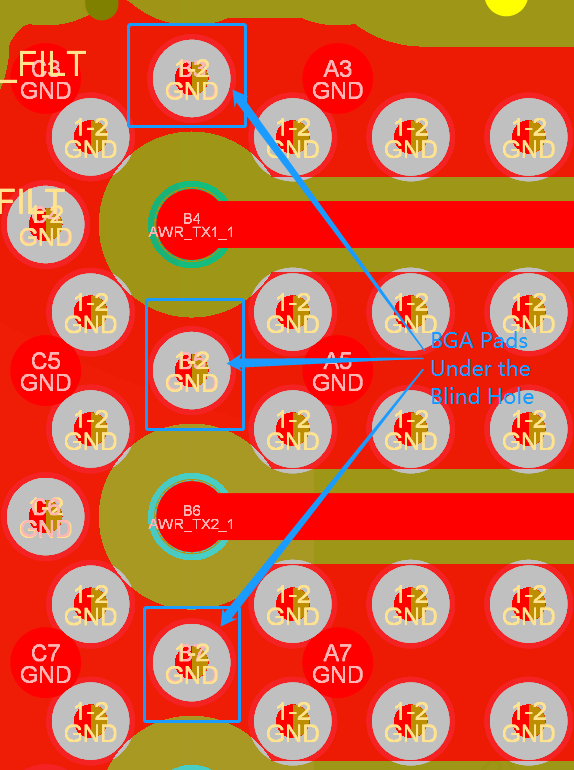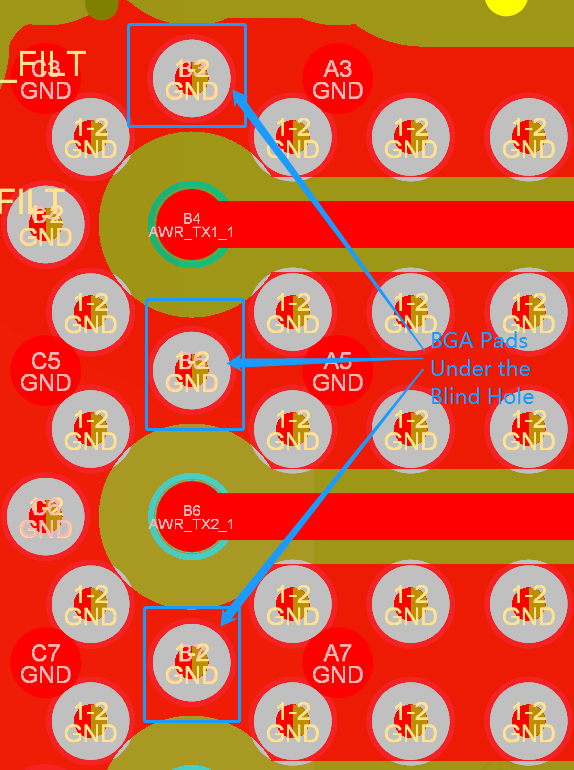Other Parts Discussed in Thread: AWR2243
Hi:Everyone
In a 4-piece cascade AWR2243PCB, there is a l1-2 blind hole in the simulated ground pad next to the transmitting and receiving pads of each piece 2243,
May I ask if this blind hole has other functions besides the function of forming analog power loop and RF isolation shield?If the bell is deleted, will it affect the function of THE MMWCAS-RF-EVM system?



